If you’re interested in exploring mile after mile of untamed beaches and lush maritime forests, Cumberland Island National Seashore is one of the most secluded places you can visit along the beautiful Georgia Coast.
Although few full-time residents live there these days, during the Gilded Age it was home to some of America’s wealthiest families — including the Carnegies, Rockefellers, and Candlers.
Thomas Carnegie was a steel tycoon, while Asa Candler owned the original recipe for Coca Cola — probably the most closely-guarded recipe in American history.
With their vast personal fortunes and the ability to build anywhere, these families chose to construct their winter retreats on Cumberland Island. That alone should tell you it’s quite a special place!
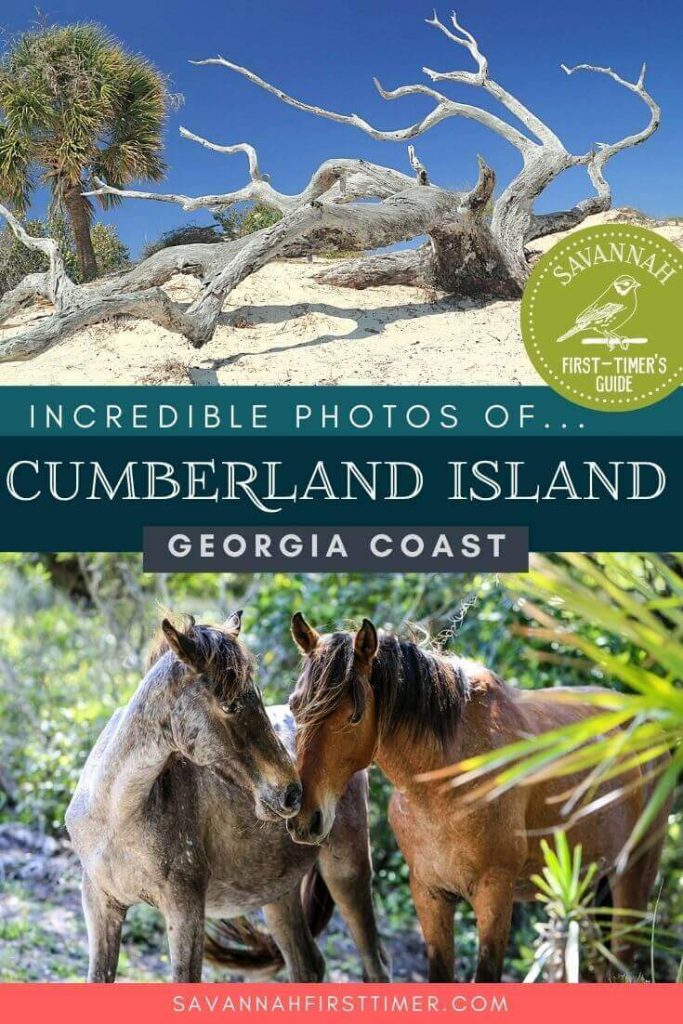
Note: This guide contains affiliate links to my trusted travel partners.
If you’re new around here, first of all…let me extend a warm welcome! I’m happy you’re here.
My name is Erin, and I authored the Savannah First-Timer’s Guide. I live in Savannah, and I enjoy helping visitors get to know the area.
Table of Contents
Map of Cumberland Island
First things first, here’s a map of the island to help you get your bearings…
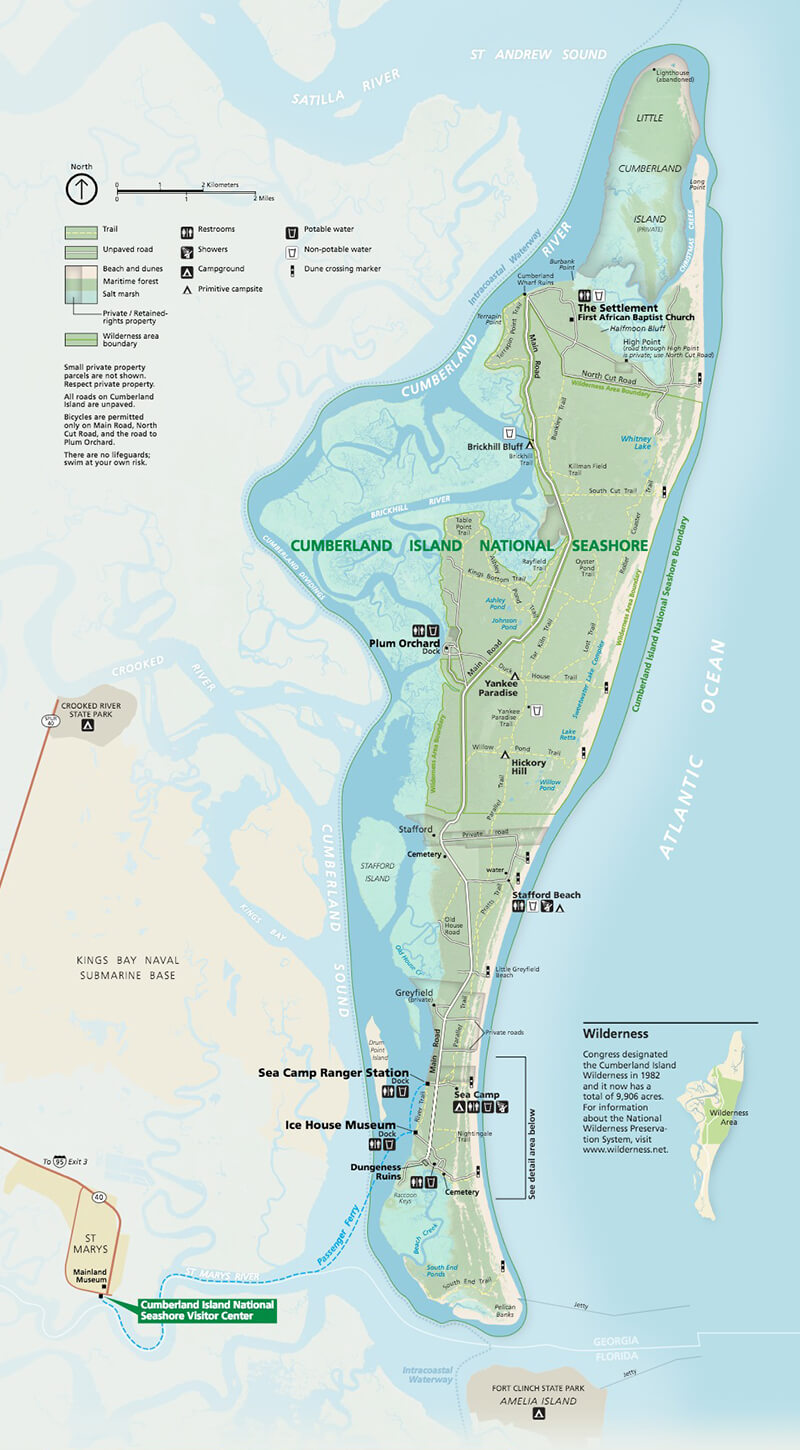
Planning a Trip to the Island
I’m going to cover everything you need to know if you’re planning a trip!
We’ll discuss how to get there, my top safety tips (wild hogs, alligators, snakes…oh my!), where to stay on Cumberland Island (luxurious inn vs. camping…hmmm, such a dilemma), the best things to do, and where to find those beautiful — and controversial — wild horses of Cumberland Island.
You might also be interested in:
🌴 13 Incredible Beaches Near Savannah GA
🌴 Ossabaw Island, Georgia: A Photo Essay
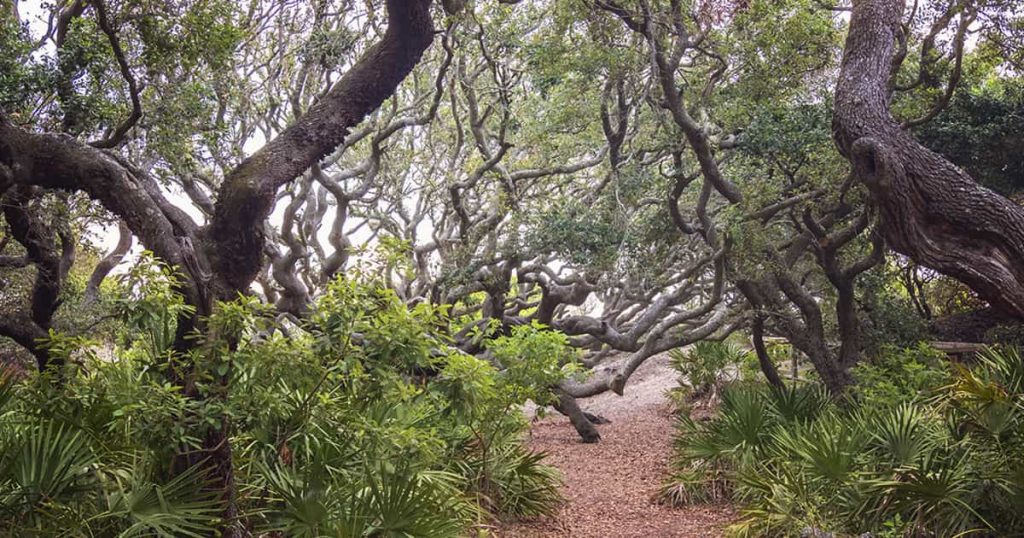
Note: This guide contains affiliate links to my trusted travel partners.
Where to Stay on Cumberland Island
Cumberland Island National Seashore is run by the National Park Service, and it isn’t what I’d consider a last-minute, “Hey, let’s go to Cumberland for the weekend!” kind of place.
It requires a little advance planning.
First, you’ll need to decide if you’re just going for a day trip or if you plan to spend the night.
Then — if you’re planning to spend the night — you’ll need to decide if you’re staying at the Greyfield Inn or if you prefer to go camping.
As far as experiences go, they’re two polar opposites!
If you choose the Greyfield Inn you’ll take a ferry based out of Amelia Island, Florida. You’ll enjoy a pampered stay on private property owned by descendants of one of the wealthiest families in the history of the United States.
On the flip side, campers and day-trippers will take a ferry based out of St. Marys, Georgia. You’ll enjoy roughing it amongst a backdrop of beautiful Southern live oaks and saw palmettos — with the occasional visit from deer and wild horses.
I’ve written in-depth about each experience below to help you make your decision. Let’s get to it!
Greyfield Inn Cumberland Island
If you’re trying to decide where to stay on Cumberland Island, the Greyfield Inn is the most luxurious option. It’s also the only option — aside from camping.
The property is stunning, all-inclusive, and it ranks high on my list of dream places to spend a long weekend! Many of my friends have stayed there, and — much to my chagrin — they won’t stop raving about it.
It has beautiful covered porches with a relaxing swing where you can snooze the day away, a dreamy library filled with row after row of books (first editions, no less — from the Carnegie family collection) and perfectly-worn leather chairs, and the grounds are dotted with massive Southern live oaks draped in Spanish moss.
Sounds pretty amazing, right?
Imagine the pages of Southern Living come to life, and that’s basically what you’ll find at Greyfield Inn. It’s sophisticated, while still managing to feel like a “kick your feet up and relax” kind of place.
They serve a drop-in breakfast, a grab-n-go packed lunch that you can take when you head out exploring for the day, and a semi-formal dinner where guests all gather to dine together. (Jackets are required for men during dinnertime, but you can request a loaner, if needed.)
VERDICT: Choose Greyfield Inn if you’re planning a splurge trip, if you want to be pampered, or if you’re simply accustomed to staying at luxury properties when you travel. Rates start at $725 per night.
Camping on the Island
If you plan to camp, you’ll need to book your campsite months in advance for the most popular times. By early January, many of the slots for spring are already filled.
You’ll have to hike to each campsite from the ferry drop-off point, so make sure you take the distance from the ferry to each campsite into consideration when you’re trying to decide where to stay. I’ve included the distances below.
There are two beach campsite locations and three wilderness camps. The wilderness sites have the most dreamy maritime forest views — especially when the mist sets in across the island!
However, make note that the wilderness sections occasionally close for a short period of time for managed hunts from October to January.
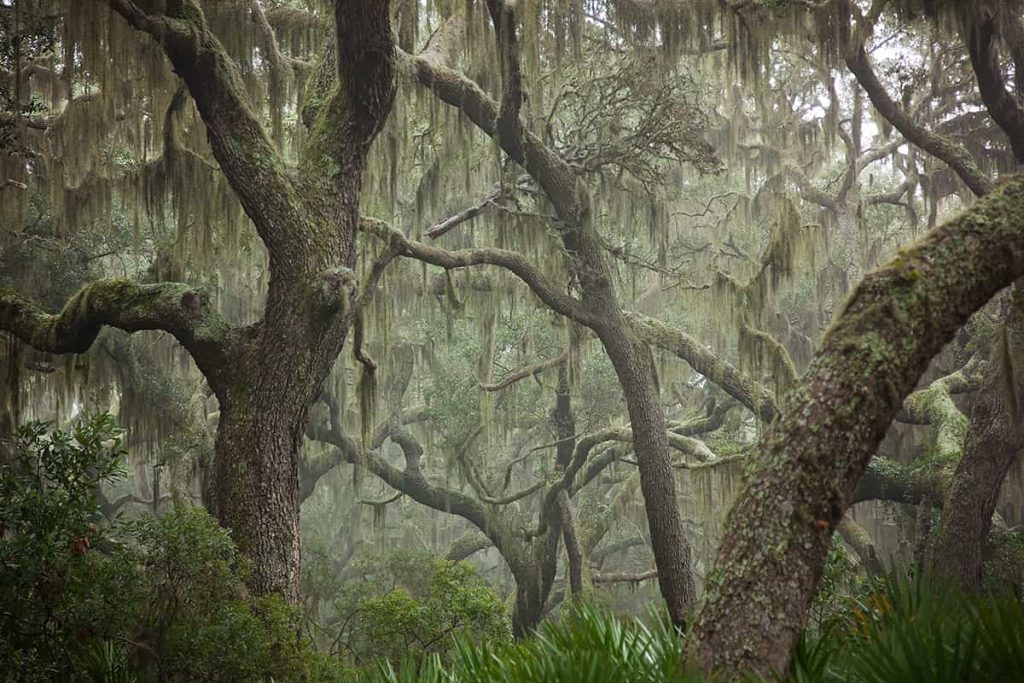
None of the hike-in sites on Cumberland Island include electricity and none of the showers are heated.
Other than those similarities, I’ll break down the pros and cons of each of the campsites to help you make a decision…
Sea Camp
You’ll only have to walk half a mile from the ferry to Sea Camp, so it’s the most ideal spot for beginners and families.
You can even rent carts to transport your items to the campsite so you won’t have to carry everything in backpacks, and you can also purchase firewood from the ferry (based on availability).
In addition to being easy to get to, Sea Camp has bear coolers where you can store your food and trash.
It’s also the only location that has drinkable water.
The closest historic landmark to Sea Camp is the Dungeness Ruins site.

Stafford Beach
The Stafford Beach campsite is a 3.5 mile hike from the ferry dock, and carts aren’t allowed.
You’ll need to bring all of your items in via backpack and transport all of your waste off the island at the end of the trip!
Here are some helpful tips regarding how much weight you should carry when backpacking.
You are allowed to bike to Stafford Beach, but can only do so on designated roads.
Personal bikes (not rentals) are also allowed on a small section of the beach between Dungeness and Sea Camp Crossing.
It’s the only beachfront area on the entire island where you’re allowed to ride a bike.
One of the perks at Stafford Beach is that you’re allowed to have small campfires at the site! Make note that they’re only allowed inside designated fire rings, though.
Since it would be difficult to carry firewood from the ferry to the campsite with all of your camping gear, make sure you start looking for firewood as soon as you arrive to the site.
Bring water filters for your drinking water, and remember to leave no trace at the end of the trip.

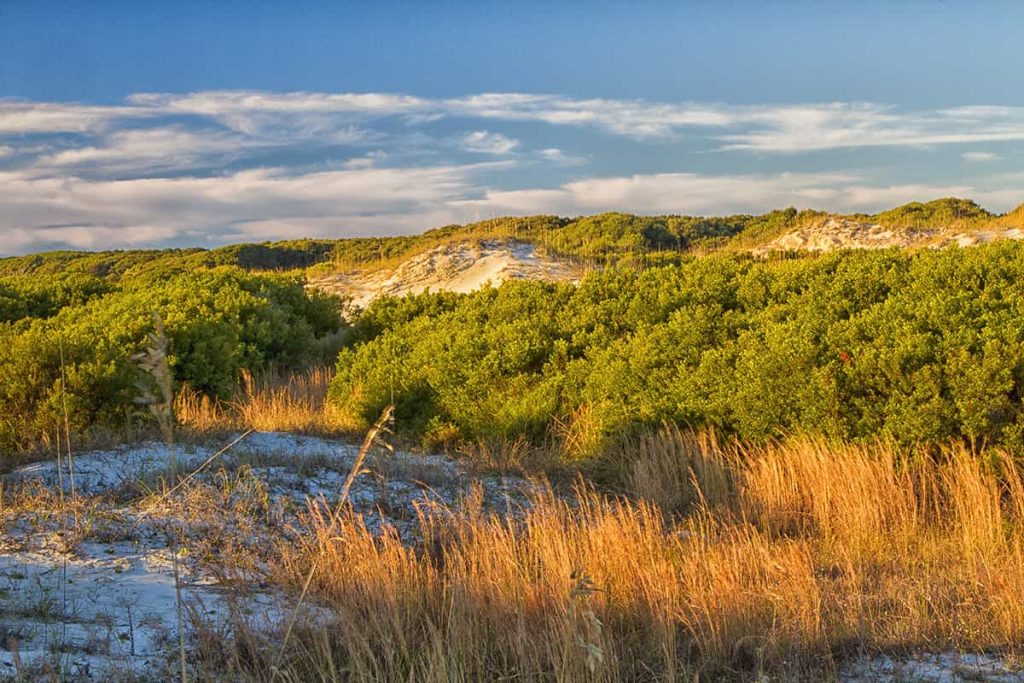
Hickory Hill Wilderness
The Hickory Hill campsite is a 5.5 mile hike from the ferry dock, so it’s the closest wilderness campsite you can hike to.
The site is located in a secluded area, but it’s only a short walk to get from there to the beach.
Since it’s in the middle of the island and protected by trees, don’t expect much of a sea breeze to help keep the bugs away.
Campfires aren’t allowed in any of the wilderness area campsites.

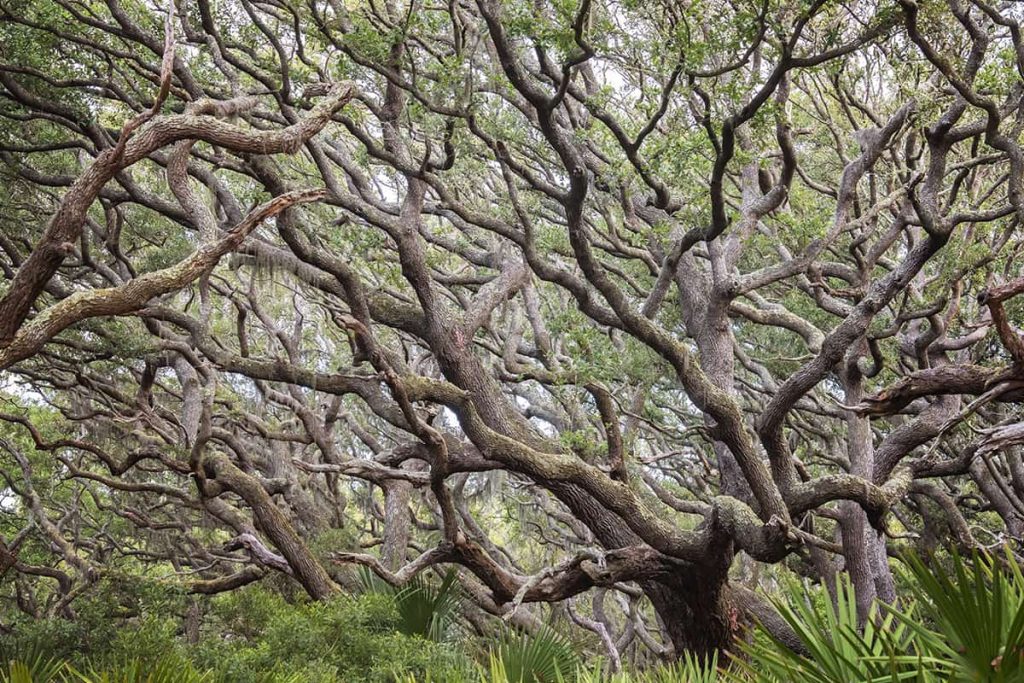
Yankee Paradise Wilderness
The Yankee Paradise campsite is a 7.5 mile hike from the ferry dock.
The closest landmark is the old Plum Orchard estate, which is a stop on the island’s popular Lands and Legacies tour.
Plum Orchard has working spigots, so if you stay at the Yankee Paradise camp site, you can walk there to fill your water bottles.
The ground in this area is a mix of sand and dirt, so it’s nice and level for camping.
As with all of the wilderness sites, campfires aren’t allowed.

Brickhill Bluff Wilderness
Brickhill is located 10.5 miles north of the ferry dock. It’s located along the western shore of the island, so it’s also the campsite furthest from the ocean.
The closest landmarks are historic First African Baptist Church and the area known as The Settlement.
Brickhill is the campsite with the best-tasting well water, but you’ll still need to bring filters.
As with the other wilderness sites, campfires are strictly banned.

Once you’ve made your decision, you can reserve campgrounds as far as six months ahead via the Cumberland Island Campsite Reservations website.
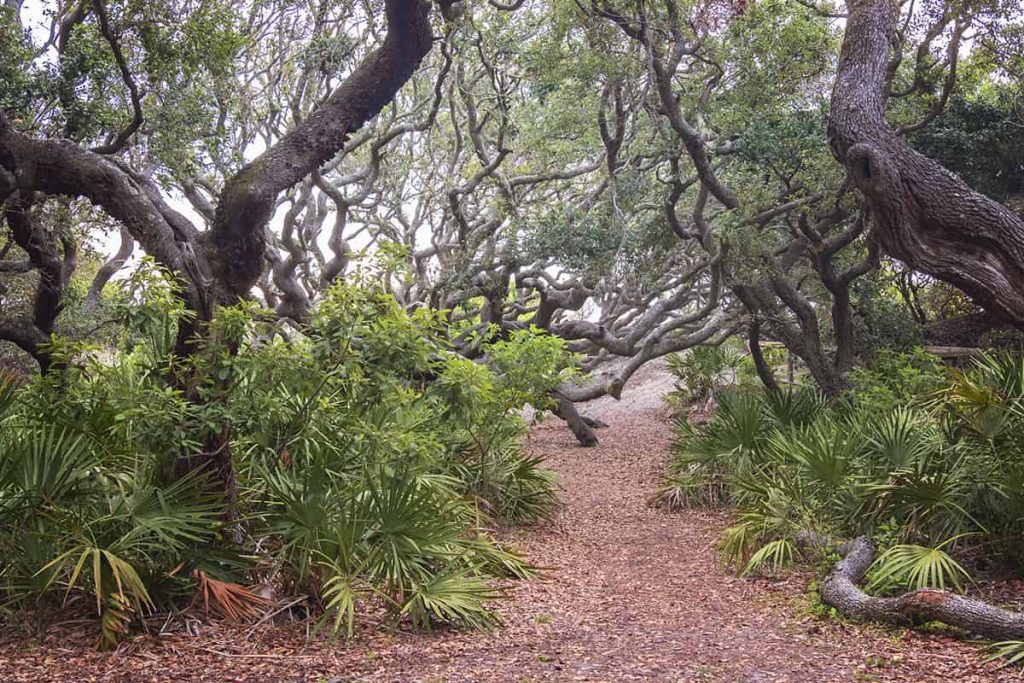
Getting to Cumberland Island
Cumberland Island National Seashore is located in southeastern Georgia just north of the Florida border. It’s the southernmost barrier island in the state.
The closest nearby city is St. Marys, Georgia, and that’s where you’ll find the Cumberland Island Visitor Center. It has restrooms, a gift shop, and a nifty sea turtle exhibit.
If you’re going for a day trip or are planning to camp overnight, the Visitor Center is where you’ll check in for the ferry. It’s also where you’ll park for the day.
The St. Marys ferry only carries a certain number of passengers each day and the ferry schedule varies by season, so make your reservations in advance — don’t wait until the last minute!
🏠 Check VRBO options in St. Marys
If you’re staying at the Greyfield Inn, they’ll give you custom instructions for catching their private ferry from Amelia Island, Florida.
🏠 Check VRBO options on Amelia Island
🏨 Check hotel options on Amelia Island
Ferry to Cumberland Island
As I mentioned earlier, you’ll need to make ferry reservations in advance. Be sure to tell them if you’re bringing a bike along, since you’ll have to pay extra to reserve a spot for it.
It costs approximately $17 per person to ride over on the ferry (less for kids and senior citizens) and $10 to transport your bike.
The ferry schedule varies by season, but it runs seven days a week for most of the year. Winter is the exception, and the ferry doesn’t run on Christmas day.
You’ll get an orientation of the island aboard the ferry, so be sure to pay close attention to the instructions. They’ll tell you what to do on the off chance that you encounter a wild boar or one of the beautiful untamed horses of Cumberland.
- Ferry Schedule: Cumberland Island Ferry Schedule
- Ferry Reservations: Cumberland Island Ferry Reservations
NOTE: Don’t forget to tip the deckhands on the ferry!
Cumberland Island Horses
The wild horses of Cumberland are quite a draw for tourists — especially photographers. That’s not the case for animal lovers, though.
Cumberland’s horses are truly feral and don’t receive any type veterinary assistance, shelter, or food to survive life on the island.
Because of this, you might spot injured animals or even see horses that look like they’re starving.
As much as you’ll probably want to help them, it’s important to leave them alone.
The horses aren’t native to the island, and their presence is actually detrimental to the delicate ecosystem of the marsh.
To help them, you can send a letter to NPS representatives requesting to have them ethically removed from the island.
As the guides will tell you when you venture across on the ferry, the wild horses will leave you alone unless they feel threatened, so it’s best to just enjoy them from a distance.
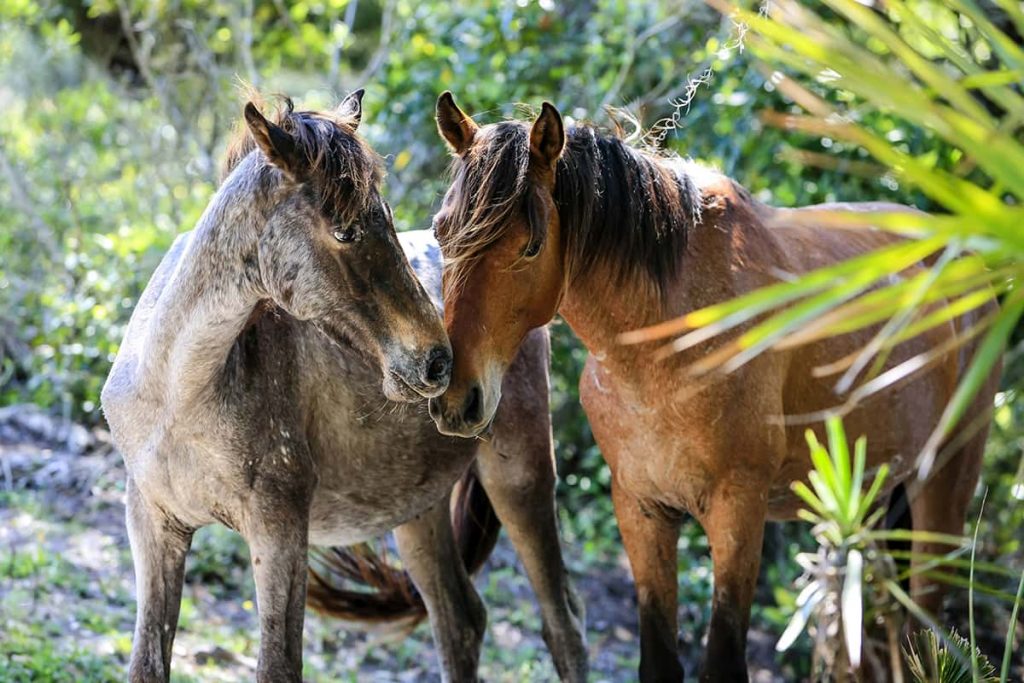
Never feed the horses, never try to pet the horses, and always remember that the horses have the right of way if you encounter them on any of the trails.
Related Reading: Wild Horses of Cumberland Island
Annoyances on the Island
Sometimes the smallest critters can be the most annoying, and that’s certainly the case on Cumberland Island.
The “no-see-ums”, chiggers, ants, mosquitoes, and ticks will do their best to spoil your trip!
Mosquitoes and ticks are particularly bad during the summer months, but make sure you do a thorough daily tick check no matter what time of year you visit.
Most visitors find the no-see-ums to be the most annoying bugs of all.
On a scale of 1 to 100 — with 100 being the most annoying — they rank around 1 million.
Try packing Avon’s Skin So Soft, ORS Olive Oil spray (w/coconut), or anything with a heavy concentration of DEET to deter them.
Be sure to bring liquid Benadryl to use on any bites you suffer during your trip.
You WILL get bites, by the way. It’s pretty much unavoidable.
As for the bigger beasts, the island has wild boars and some pretty big alligators.
In case any Darwin Award candidates are here reading this post, the nicer half of my personality compels me to remind you to steer clear of them.
There are also cute little raccoons on the island. Although they probably won’t bother you, they will try to get into your food — as will the ants.
Bring bags to hang anything edible so the critters won’t have easy access to it.
Renting Bikes
Sometimes you can rent bicycles at the Sea Camp location, but there are equally as many times when the rental bikes are out of service. It’s best not to count on their availability.
Also, just so you know, the rental bikes get a lot of use, and they don’t exactly thrive in the salty ocean air, so they aren’t always in the best condition.
For those reasons, I suggest bringing your own.
Make note that you’ll need a bicycle with decent sized tires, though. Off-road bicycles work best.
A 10-speed is far too lightweight to handle the island’s designated bike trails, which are all sandy surfaces.
There’s some debate as to whether or not bikes damage the delicate ecosystem of the island, so remember to stay on the designated trails and always practice the 7 Principles of Leave No Trace.
Whenever you’re planning your trip and are trying to estimate how long it will take you to get from one point on the island to another, give yourself a little extra time versus what the same distance would take on a paved surface.
Biking over sandy trails is slow going!
Important Tip: Don’t forget to let the ferry operators know in advance if you’re bringing a bicycle. You’ll have to pay an additional bike transportation fee of approximately $10.
Cumberland Island History
Cumberland Island has a very rich history. There’s so much to explore while you’re there!
Because there’s so much to see, weekend trips are much better than a quick day trip.
A few historic places of note on the island include the Dungeness Ruins, the late 19th century Plum Orchard Mansion, and First African Baptist Church — the tiny church where John F. Kennedy, Jr. and Carolyn Bessette were married.
Tacatacuru Tribe: The Indigenous Years
Indigenous people lived fairly undisturbed on the island for thousands of years — well into the 16th and 17th centuries.
When Spanish settlers arrived in the 1500s, they met with members of the Timucuan tribe. The tribe members were known as the Tacatacuru.
Those early Spanish settlers were soon followed by the French and then the British.
Unfortunately, many of these early colonists brought diseases that detrimentally affected the Native American populations.
By the late 1600s, the Tacatacuru left Cumberland and went to live amongst existing tribes in what is now known as Florida.
The Tacatacuru were replaced by the Yamasee tribe, who stuck around Cumberland Island until the Yamasee War of 1715.
In the early 1700s, General James Oglethorpe — the British general who established the city of Savannah, along with Toonahowi — a member of the Yamacraw tribe, bestowed the name of Cumberland to the island to honor Prince William, Duke of Cumberland.
Oglethorpe was the first known developer to build a significant structure on the island. He constructed a hunting lodge that he named Dungeness.
Dungeness Ruins Part I: The Greene Family Era
In 1785, Revolutionary War hero General Nathanael Greene was gifted land on the southern end of the island as payment for his help during the war.
He died a year later, and his wife Catherine inherited the property.
Catherine Little Greene then married Phineas Miller and the two constructed a tabby mansion, which they also named Dungeness.
Their Dungeness mansion was the site of many large social gatherings, and the Millers used the surrounding land to harvest what was known as “Sea Island cotton” — one of the most lucrative crops of that era.
During the late 1700s to early 1800s the Millers had more than 200 enslaved individuals working on the plantation. Generous crops of Sea Island cotton helped further amass their family fortune.
The Dungeness tabby mansion burned down in 1866.
Cumberland Island Chapel: The Emancipation Era
When previously enslaved African American families were emancipated at the end of the Civil War, they formed a community on the north end of the island. It became known as The Settlement.
In 1893, residents constructed a tiny, one room church in The Settlement where members could gather, “hold prays” (a common Gullah term), and host community events.
The church was rebuilt in the 1930s, and it received worldwide attention in 1996 when John F. Kennedy and Carolyn Bessette chose it as the location for their secret wedding.
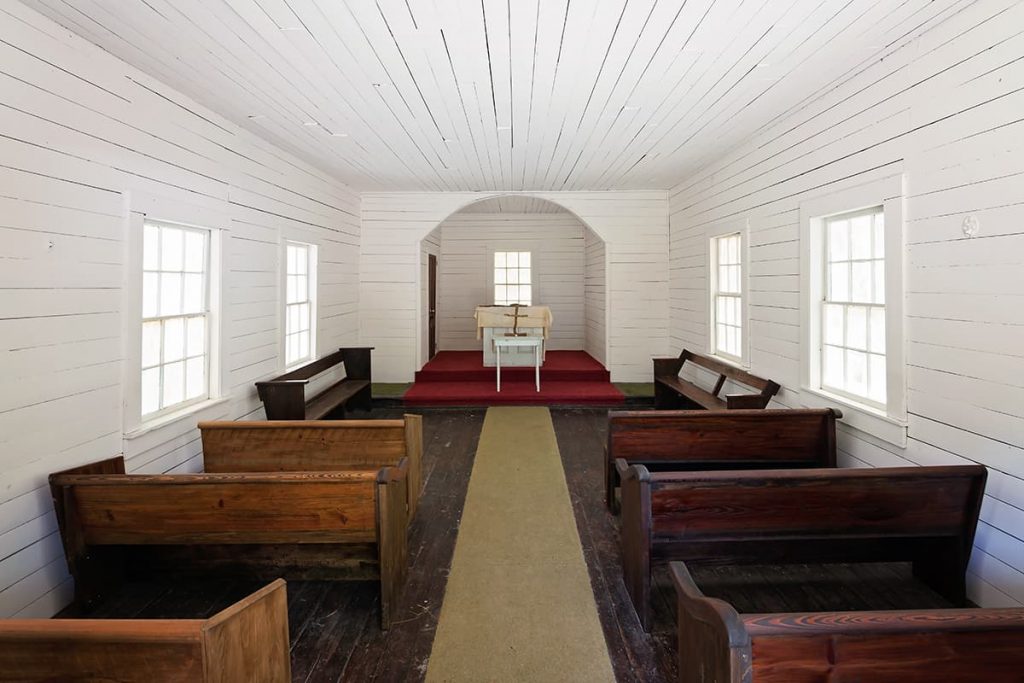
Dungeness Ruins Part II: The Carnegie Family Era
In the late 1800s, Thomas and Lucy Carnegie purchased land on the island and began constructing a lavish winter getaway on the spot where the former Dungeness tabby mansion once stood.
Their new Dungeness mansion was a massive 59-room castle that included pools, fountains, and numerous servants quarters. The grounds even had a golf course.
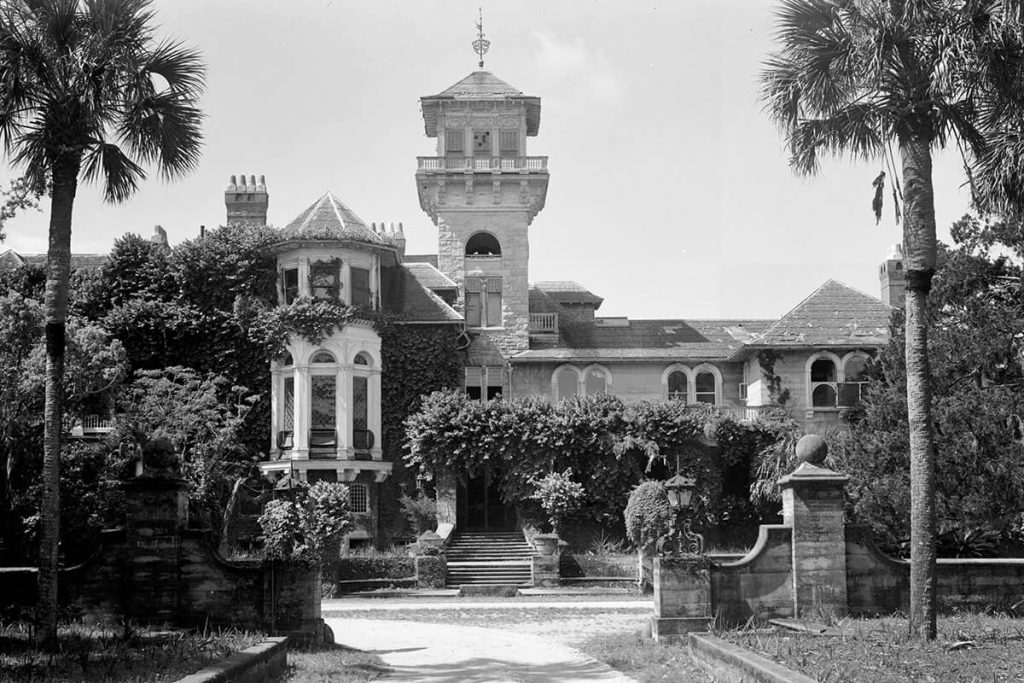
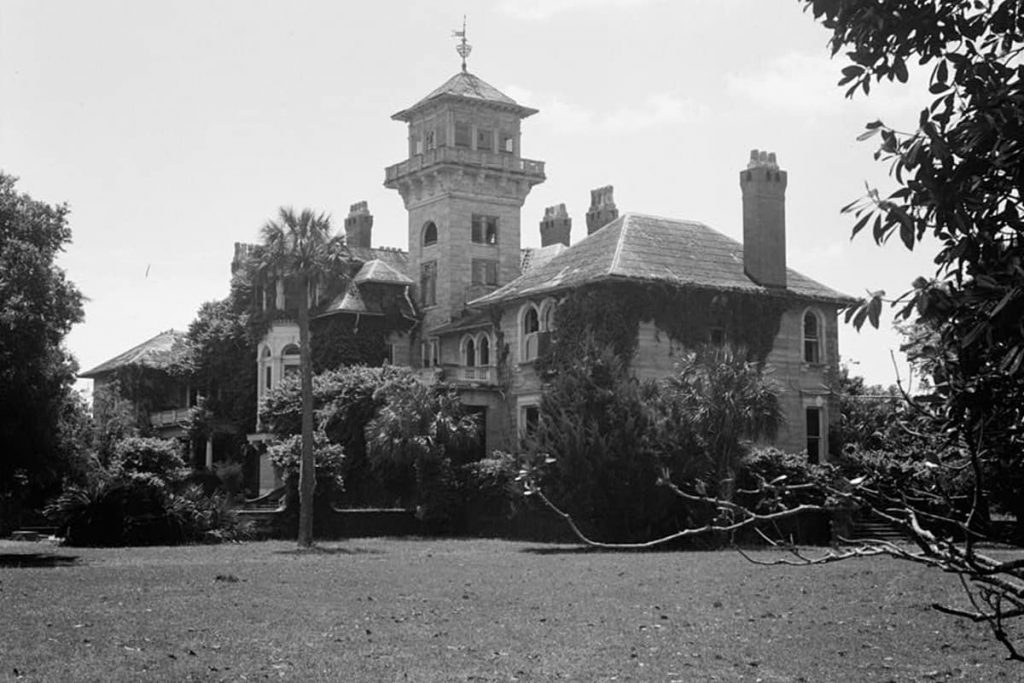
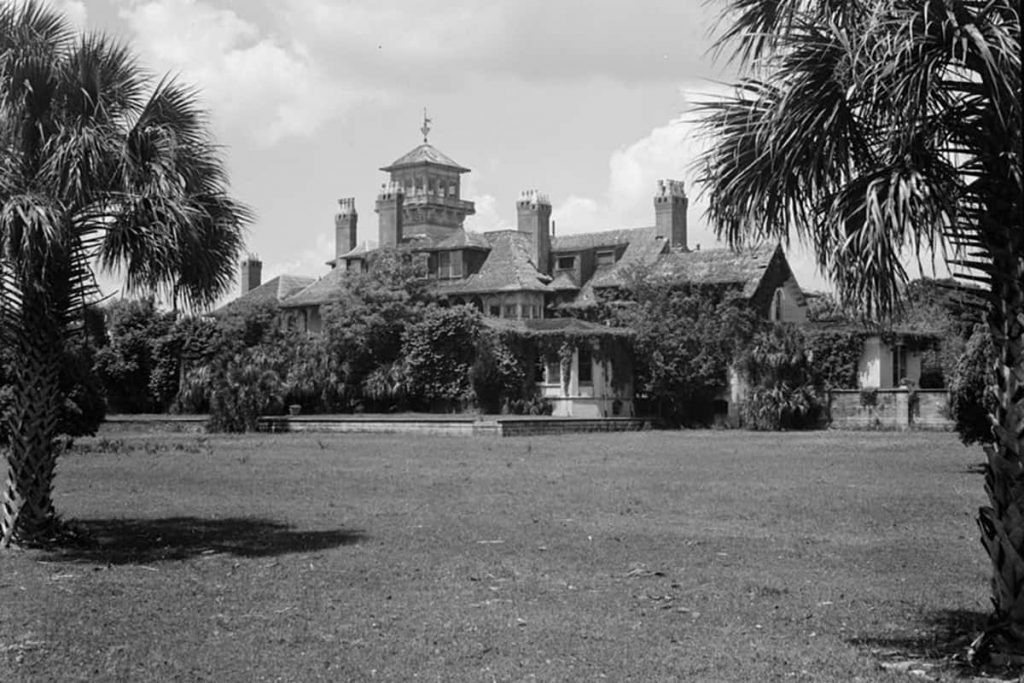
Through the years, Lucy had five additional houses built on the island.
The Greyfield Inn, constructed in 1900, was built for her daughter, Margaret Ricketson. Plum Orchard Mansion, The Cottage, and Stafford House were also built for Lucy’s children, while The Grange was constructed for Lucy’s estate manager.
Similar to the Miller family before them, the Carnegie family employed more than 200 servants to keep their properties running.
Dungeness was the site of many elite social gatherings during the Roaring 20s. It was a real life Great Gatsby house tucked away on a remote island along the beautiful Georgia coast.
One of Carnegie’s daughters was married at the mansion in 1929, but that event signaled the end of an era.
Soon after the wedding, the start of the Great Depression brought changes throughout the country.
The Carnegie family abandoned their island properties and left Cumberland.
Dungeness caught fire in 1959 and was considered a total loss.
What’s that they say about history repeating itself?
You can still visit the ruins today to see what remains of the former mansion. It’s slowly being overtaken by nature.
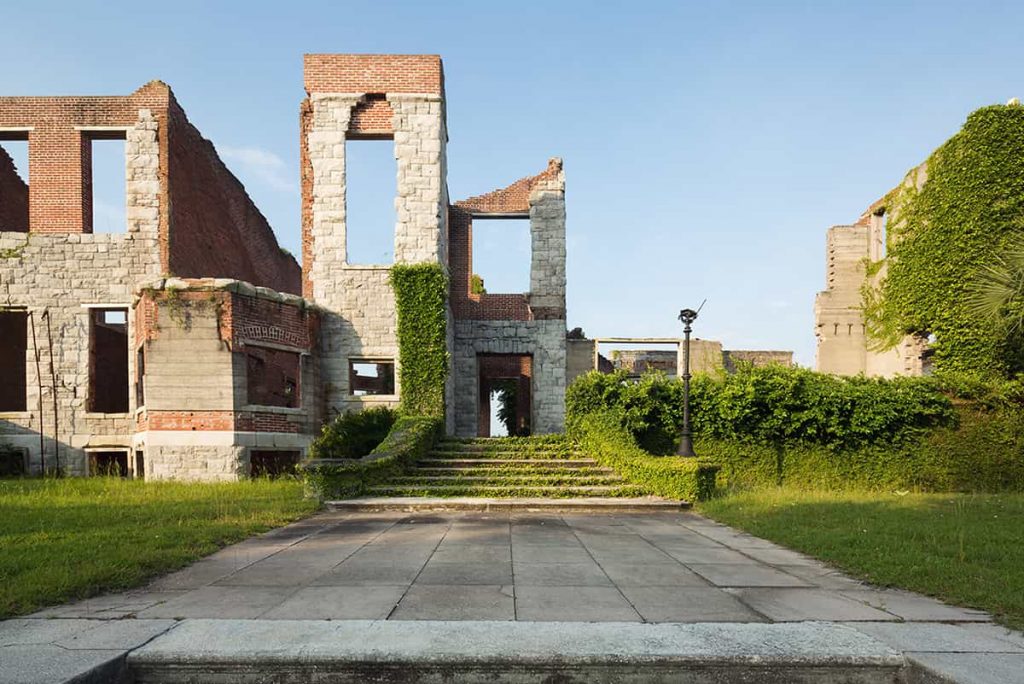
Members of the Carnegie family still own property on Cumberland Island, including the Greyfield Inn. Descendants of the Candler family still own property on the island, as well.
Related Reading: The Era of Rich Estates on Cumberland Island
Plum Orchard Mansion: The Carnegie Family Era
The stately Plum Orchard Mansion was built in 1898 as an opulent wedding gift for Lucy’s son George Lauder Carnegie and his wife, Margaret Thaw.
Although it was abandoned for a time, the NPS has been diligent about preserving the home in recent decades. It’s currently open for touring.
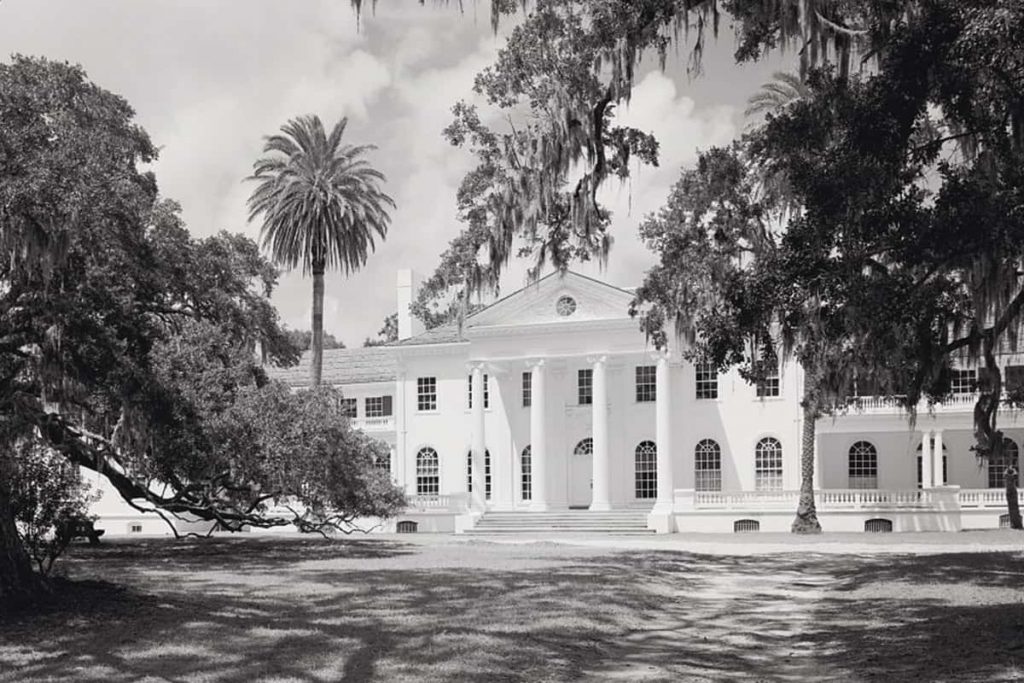
When you explore it, you’ll see that Plum Orchard still looks much like it did when the family lived there.
The rooms still have their original wallpaper, hardwood floors, Tiffany lamps, and some of the original furnishings.
It’s mind-boggling to imagine how much wealth must’ve gone into the design of the home in such an isolated area.
It includes rare and luxurious features (for the time) such as an indoor heated pool, elevators, rudimentary refrigeration methods, generators, and more.
You can only tour Plum Orchard if you book the Land and Legacies Tour or arrange a visit via the Greyfield Inn. You can’t just walk in if you’re camping nearby.
Make Note: The Carnegies were connected, but not connected enough to add air conditioning to their lavish island home. If you go during the summertime, expect to sweat out every ounce of excess water in your body.
Modern Times: The Carol Ruckdeschel Era
I’d be remiss to bring up the history of Cumberland Island without mentioning the indomitable Carol Ruckdeschel!
She’s the self-taught biologist and environmental activist who has dedicated much of her life to keeping the island wild.
Much like Sandy West’s lifelong crusade to save Ossabaw Island, Georgia from development, Carol Ruckdeschel has spent decades advocating for Cumberland Island — standing her ground against both the Carnegie heirs and the National Park Service.
She’s a passionate advocate for the many sea turtles that nest on Cumberland Island each year.
The island is actually the top sea turtle nesting spot along the entire Georgia Coast!
To learn more about Carol’s quest, I highly suggest taking a peek around her site: Wild Cumberland.
Her book, A Natural History of Cumberland Island, Georgia, also makes a worthy addition to any nature lover’s bookshelf.
Savannah Travel Guide
If you’re planning a trip to the Georgia coast and plan to stop in Savannah, I’m happy to help!
- If you don’t know anything about the area, head to my Savannah Vacation Guide first. It’s a quick-start guide that will give you a brief overview of the city.
- When you sign up for my email list you’ll gain access to my Free Resource Library. It contains a list of 50 Things To Do on Foot in the Historic District (No Car Necessary!)
- My Savannah First-Timer’s Guide contains a collection of my best insider tips to help you plan your trip. It’s the easiest way to have all the information you need at your fingertips!
Do you have any questions for me about Cumberland Island National Seashore? Let me know in the comments below!
Love this post? Pin it now to save for later!

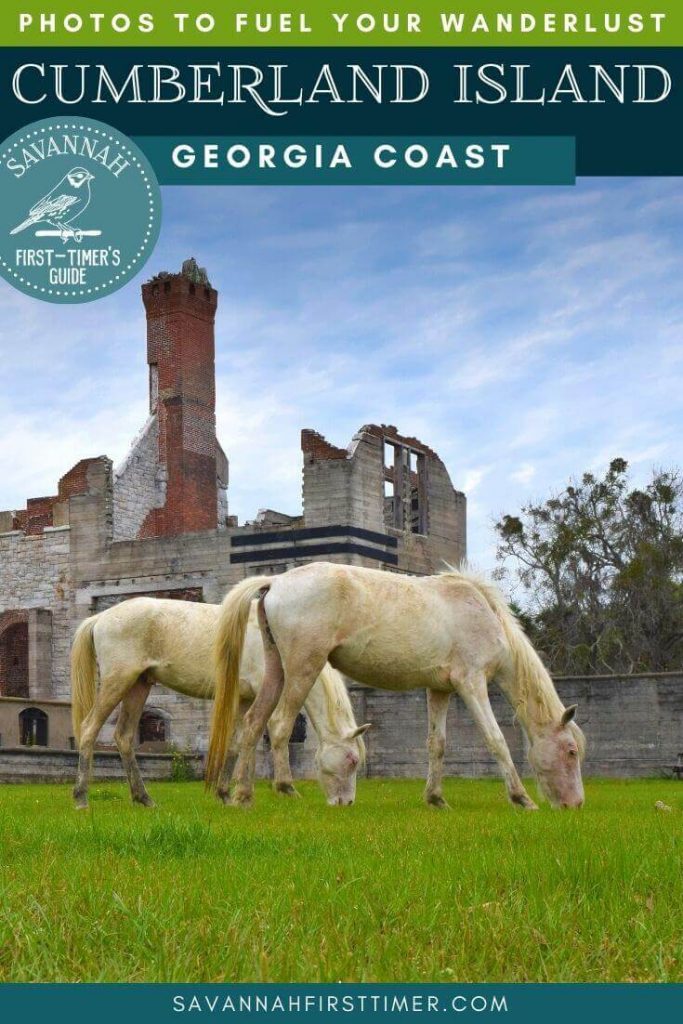
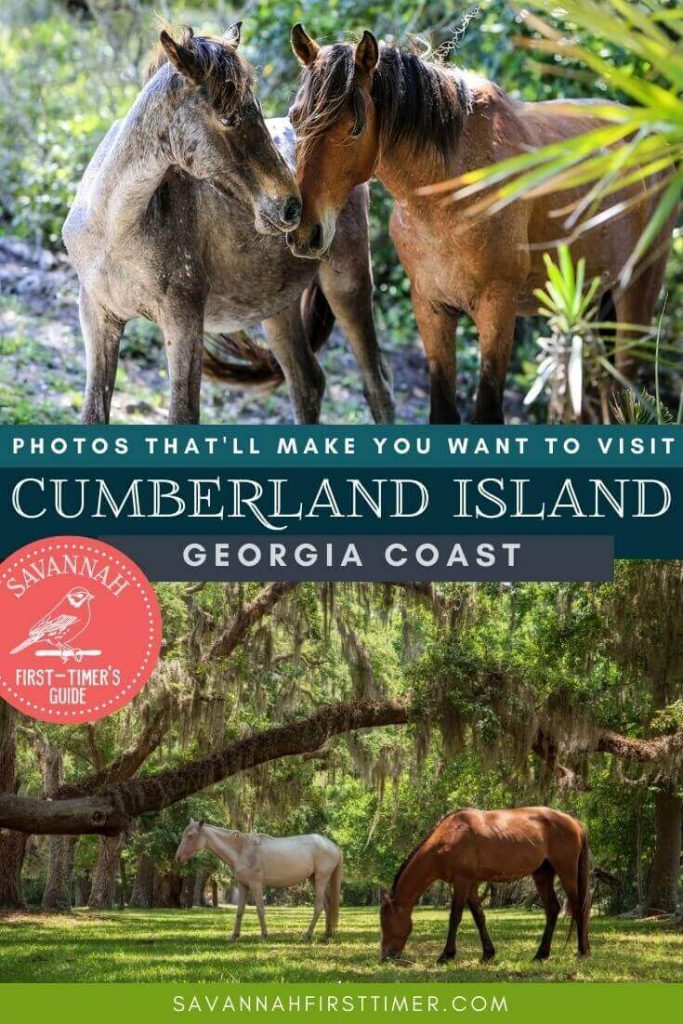
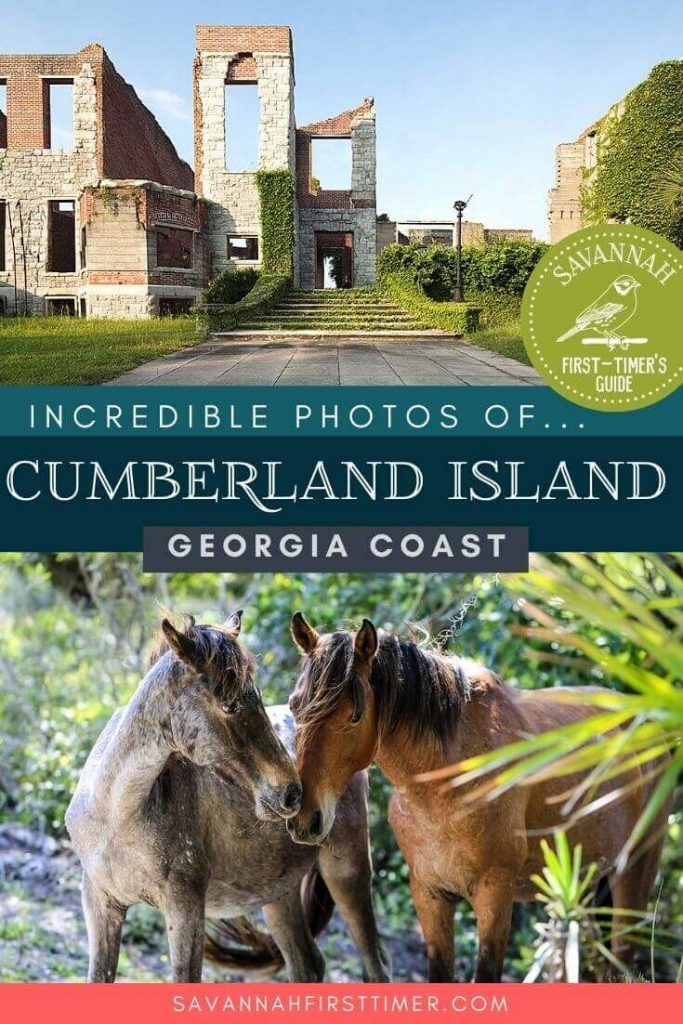
I am watching the Gilded Age on HBO right now so it is fascinating to see how the wealth migrated to this private island. I want to go!
Great post, well written and I loved the bits of history you included. Looks like a beautiful place to visit. (Though I could never rough it and camp, or afford that hotel, haha 🙂
Oh I totally get the struggle. lol I’m saving my pennies for a trip to the inn!
Love your comment to the Darwin award candidates. I might have to borrow that line…
Ha! Steal away 🙂
Hi Erin!!
Was excited to find you again….great article!!